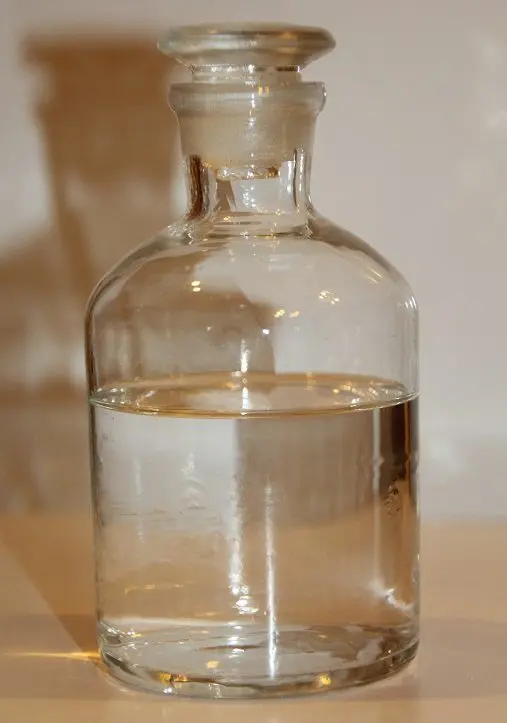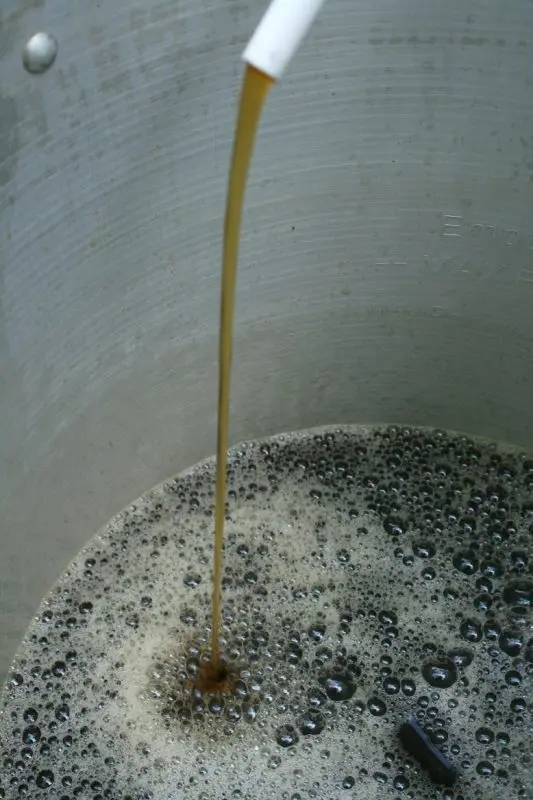Contents
Sometimes even experienced distillers are faced with a situation where moonshine or mash smells like acetone. Do not immediately panic – in most cases, the drink can be saved. In this material, we will deal with the causes, methods for eliminating unpleasant odors and preventive measures to prevent a similar situation in the future.
1. Acidification
The most common problem is that when air enters the wash, acetic and lactic acid bacteria turn part of the alcohol into vinegar and water, releasing other substances. As a result, the mash gives off acetone, and after distillation, the moonshine turns sour.
Solution: you can try to extinguish the acid with soda and distill the distillate again with the selection of “heads” and “tails” (for more details, follow the link above). The effectiveness of correcting moonshine depends on the degree of souring of the mash.
Prevention: be sure to install a water seal on the fermentation tank and check its tightness in order to protect the mash from oxygen access.

2.Feature of raw material or yeast
The smell of acetone sometimes appears in grain brews, especially those made cold (without boiling the wort), or if “wild” yeast was used. The problem may be low grain quality or must contamination with pathogenic microorganisms. Sometimes the smell of acetone in Braga gives preservative-treated sugar and even tap water.
Solution: slow re-distillation with a minimum of 15% “heads” (from absolute alcohol) and with the end of the “body” selection when the strength in the stream falls below 50% vol.
Prevention: use high-quality raw materials and cultured yeast strains.
3. Long fermentation
The longer the mash plays, the more harmful impurities the yeast releases. If you leave the washed mash for a couple of weeks even under a water seal, without first removing it from the sediment, a smell of hydrogen sulfide or acetone may appear – the sediment will begin to decompose. The problem is more typical for grain and fruit brews, but it is also possible with sugar.
Solution: another distillation of moonshine (previous paragraph).
Prevention: reduce the fermentation time of the mash (make a water ratio of 1:4 or 1:5, maintain a stable temperature recommended for a particular yeast strain). If it is not possible to immediately overtake the mash that has won back, be sure to remove it from the sediment, close it hermetically and put it in the cold.

4. Too Few Heads Selected
The head fractions of moonshine almost always stink of acetone, this is normal and no need to be scared. With proper distillation, after a while the smell of distillate in the jet returns to normal, then you can begin to select the “body”. If you are “greedy” and start collecting the main drink too early, the resulting moonshine will smell of acetone.
Solution: distill the distillate again, dividing it into fractions.
Prevention: correctly select the “heads” during distillation.
5. Problems with the apparatus or incorrect distillation
Sometimes the smell of acetone in moonshine can appear due to a poorly washed cube or other elements of the moonshine still, as well as if the distillation technology is broken.
Solution: re-fractional distillation.
Prevention: monitor the cleanliness of equipment and containers, follow the instructions for your apparatus and distillation technology, and prevent splashing.









